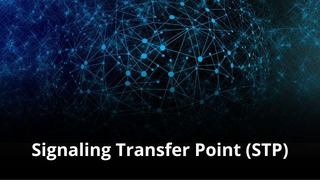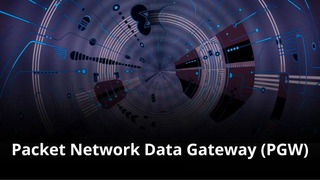Introduction about the User Plane Function (UPF)
The User Plane Function (UPF) is the fundamental data packet processing and forwarding component in the 5G Core (5GC) network. It is the key element responsible for handling the actual user data (the “payload”)—like video streams, web traffic, and application data—and routing it between the radio access network (RAN) and external data networks (DNs), such as the Internet. The UPF’s design is central to achieving 5G’s promises of high throughput, ultra-low latency, and network slicing.
What are the details of an User Plane Function (UPF)?
- History and Evolution of the User Plane Function
- Core Utility and Functionality of the UPF
- Technical Integration and Data Model
- UPF Ownership for MVNOs and IoT Companies
- Organizational Impact of UPF Ownership?
- Redundancy and High Availability
- Impact of 4G, 5G, and 6G on the UPF
- Frequently Asked Questions about the UPF
- Summary
History and Evolution of the UPF
The User Plane Function (UPF) represents the complete realization of the Control and User Plane Separation (CUPS) principle, which was initially introduced in 4G LTE’s Evolved Packet Core (EPC). The UPF takes over the data-handling responsibilities previously split between the Serving Gateway User Plane (SGW-U) and the Packet Data Network Gateway User Plane (PGW-U). By decoupling the data plane (UPF) from the control plane (Session Management Function, SMF), 5G gains enormous flexibility in scaling and deploying user-plane resources closer to the network edge. The evolution is:
Core Utility and Functionality of the UPF
What is the UPF Used For?
The User Plane Function (UPF) is used to efficiently process, forward, and enforce policies on all mobile data traffic. Its primary function is to serve as the highly scalable engine that transports user data between the base station (gNB) and the destination network. Deploying multiple UPFs allows operators to localize data traffic, which is essential for low-latency services like Mobile Edge Computing (MEC) and Ultra-Reliable Low-Latency Communications (URLLC).
Key Functions of the User Plane Function
Investigate the core functions of the User Plane Function (UPF) to appreciate its role as the data handler:
- Policy Enforcement: It enforces QoS rules, data rate limits, and packet filtering instructions dictated by the Session Management Function (SMF).
- Usage Reporting (Charging): It generates and reports volume and duration usage data in real-time to the Charging Function (CHF) for accurate billing.
- Mobility Anchor: It maintains the data path continuity for users moving within the 5G network or between different access technologies.
- Traffic Steering: It steers different types of application traffic to specific external data networks or local edge computing platforms.
- Packet Inspection & Buffering: It performs packet inspection as required and buffers downlink data for devices in an idle state.
- Tunnelling: It terminates the GPRS Tunnelling Protocol (GTP-U) tunnel from the gNB and the GTP-U or other tunnels from another UPF.
- Packet Routing & Forwarding: It receives data packets from the Radio Access Network (via the N3 interface) and routes them to the Data Network (via the N6 interface), and vice-versa.
- External PDU Session Point: It acts as the termination point for the data session connecting the 5GC to the external IP network.
Technical Integration and Data Model
The User Plane Function (UPF) is tightly controlled by the Session Management Function (SMF) and interfaces extensively with the 5G RAN and external networks. Examine its key integration points:
- SMF (Session Management Function): The SMF controls the UPF via the N4 interface using the Packet Flow Control Protocol (PFCP). This is how the SMF instructs the UPF on how to handle each user’s session and apply specific policies.
- RAN (gNB): The UPF receives user data from the 5G base station (gNB) over the N3 interface (using GTP-U).
- Data Network (DN): The UPF connects to the Internet, corporate intranets, or MEC platforms via the N6 interface (standard IP routing).
- Other UPFs: UPFs may connect to each other over the N9 interface for multi-hop PDU sessions, especially when session anchors are separated from local forwarding UPFs.

Technical Data Model and Key Interfaces
The UPF maintains a state for each active PDU Session, including the N3 and N6 routing information, the allocated IP address, and the current set of QoS and charging rules to be applied to the traffic. Unlike the SMF, which holds the session control state, the UPF holds the per-packet forwarding state—optimized for extremely high-speed, low-latency processing.
UPF Ownership for MVNOs and IoT Companies
Why Own an UPF?
For a Mobile Virtual Network Operator (MVNO) or an IoT company, owning a dedicated User Plane Function (UPF) is a strategic decision that grants the highest degree of technical and commercial flexibility. Consider that the UPF is the component that enables Network Slicing and Edge Computing. Owning it allows these companies to create specialized network slices with guaranteed performance (e.g., dedicated low-latency paths for industrial IoT), or to place the UPF right at a customer’s premise for local data processing, which a host MNO typically cannot offer.
Advantages and Disadvantages of PWG Ownership
Edge Computing Enablement: Placing the UPF at the edge for ultra-low latency services.
Network Slicing Control: Defining and guaranteeing specific performance parameters for traffic.
Data Localization/Security: Keeping sensitive customer/IoT data within a specific geographic boundary.
Independent Scaling: Scaling UPF capacity (user plane) without impacting the SMF (control plane).
Targeted Policy Enforcement: Applying unique QoS/traffic rules for specific applications/devices.
High Technical Expertise Required: Deep knowledge of 5GC, PFCP, and cloud-native principles.
Significant Operational Overhead: Requires 24/7 monitoring and orchestration of a distributed core.
Complex Integration: Requires seamless interworking with the host MNO’s RAN and Control Plane (SMF).
Capital Investment: Substantial investment in cloud-native infrastructure (compute, storage, network).
Regulatory Compliance: Responsibility for Lawful Interception (LI) and data retention.
Organizational Impact of UPF Ownership
Analyzing the organizational impact of owning a User Plane Function (UPF). This shift is profound because the UPF is a cloud-native network function (CNF), not a traditional box.
Operational Impact: Requires adopting a DevOps/SRE (Site Reliability Engineering) culture. Teams must manage continuous integration/continuous deployment (CI/CD) pipelines and use cloud orchestration tools like Kubernetes to manage UPF containers. The focus shifts from hardware maintenance to software lifecycle management.
Financial Impact: Evaluate the high OpEx associated with compute power, as the UPF must handle massive data throughput. The CapEx is lowered by using commodity off-the-shelf (COTS) hardware, but the investment shifts to highly specialized software licenses and cloud infrastructure.
Commercial Impact: Leverage the UPF’s capability for differentiated pricing. For example, charging a premium for an ultra-low-latency slice or a security-enhanced traffic path. This is key to serving high-value enterprise and industrial IoT segments.
Technical Impact: Mandates a fully virtualized, containerized core network architecture. The company must manage sophisticated networking concepts like SRv6 and DPI for traffic steering and optimization.
Redundancy and High Availability

Because the User Plane Function (UPF) handles all live data traffic, Redundancy and High Availability (HA) are critical. Implement a fully distributed, active-active configuration across multiple geographic zones. Due to its cloud-native nature, the UPF must be designed for rapid horizontal scaling, where new instances can be spun up instantly by the orchestration layer to handle spikes in traffic. Ensure that the control plane (SMF) has mechanisms to instantly detect a UPF failure and redirect the associated PDU sessions to a redundant UPF without data loss or service interruption.
Impact of 6G on the UPF
As 6G technology emerges, Anticipate a radical evolution of the UPF’s role into an Intelligent User Plane (IUP). The core forwarding function will remain, but it will be enhanced by embedding Artificial Intelligence (AI) and Machine Learning (ML) directly into the data plane.
The 6G UPF will likely:
- Integrate In-Network Computing (INC): Allowing UPF instances to process data, perform basic computations, and run ML models right at the edge, further reducing latency.
- Support Sensing & AI-as-a-Service: Handling massive volumes of data generated by 6G’s integrated sensing capabilities and using this data for real-time network optimization and application services.
- Adopt New Protocols: Potentially moving beyond GTP-U to more flexible, programmable, and energy-efficient user plane protocols designed for a hyper-distributed environment.
Frequently Asked Questions about the User Plane Function (UPF)
1. What is the UPF's primary function, and what 4G components did it replace?
The UPF is the sole user plane component in the 5GC. Its primary function is packet routing and forwarding, QoS enforcement, and acting as an anchor point for subscriber data sessions (PDU sessions). It functionally replaces the user plane parts of the 4G Serving Gateway (SGW-U) and the PDN Gateway (PGW-U), completing the Control and User Plane Separation (CUPS) strategy.
2. Why is the UPF critical for low-latency services like Cloud Gaming or IoT?
The UPF is the key enabler for Multi-access Edge Computing (MEC) and low-latency services. Unlike centralized 4G gateways, the UPF can be physically distributed and placed at the network edge, close to the users and application servers. This allows user data to “break out” locally, significantly reducing the distance the data has to travel to the internet or an application, which is crucial for real-time applications.
3. How does the UPF handle policy and charging for different types of traffic?
The UPF does not decide the policies; it enforces them. The Session Management Function (SMF) acts as the control plane brain, sending detailed rules to the UPF over the N4 interface. These rules, such as Packet Detection Rules (PDRs) and Forwarding Action Rules (FARs), instruct the UPF on how to classify, meter, charge, and apply the correct Quality of Service (QoS) to every single data packet.
4. What is the significance of the UPF's relationship with the SMF?
The relationship between the UPF (the muscle) and the SMF (the brain) is foundational to 5G. The SMF manages the control plane for data sessions (session establishment, modification, release), and it remotely configures the UPF in real-time via the N4 interface. This separation allows operators (including MVNOs) to scale data throughput (UPF) independently from session signaling (SMF).
5. Why would a Full MVNO choose to own its own UPF?
A Full MVNO that owns its UPF gains complete control over the user plane. This allows them to: 1) Implement Network Slicing specific to their services (e.g., a low-latency slice for an IoT vertical). 2) Control traffic steering to specific application partners. 3) Own all usage reporting and charging data before it reaches the external data network, which is vital for billing accuracy and service innovation.
Summary
The User Plane Function (UPF) is the dedicated, high-performance data plane component of the 5G core, responsible for the actual forwarding, routing, and policy enforcement of user traffic. Owning a UPF is a defining characteristic of a modern, flexible MVNO or IoT provider, granting the control necessary to offer differentiated services like ultra-low-latency Edge Computing and Network Slicing. This powerful control is balanced by the necessity for significant investment in cloud-native infrastructure and highly specialized technical expertise. The UPF’s evolution towards an Intelligent User Plane in 6G underscores its enduring and growing strategic importance in the mobile ecosystem.

























